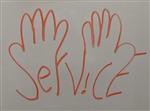-
 Mrs. Guia M. BlaskeEngineering TeacherC-Building,Room C13/C14 Ext. 6628
Mrs. Guia M. BlaskeEngineering TeacherC-Building,Room C13/C14 Ext. 6628Canvas Learning Management System
The Engineering Pathway Link
Introduction to Design (Engineering)
Principles of Engineering
Engineering Design and Development
CLUB Advisor:

INTRODUCTION TO DESIGN (ENGINEERING)
Course # 2445Grade Level: 9-10Prerequisite: NoneLength: Year A-G Credit: F (VAPA Credit)This course meets UC/CSU (F Category) and District graduation requirements for Visual and Performing Art credit. Introduction to Design is the first course in the Project Lead the Way Engineering sequence. The major focus for this course is to expose students to the elements and principles of visual design using the engineering design process. Projects will focus on design factors such as aesthetics, format, geometric shape & form, perspective drawing, scale, proportion, and presentation techniques. Students will use computers as a medium/tool for design of project components such as sketching techniques, orthographic drawing, 3D modeling and rendering. Assignment requirements are based on color, form and aesthetics with emphasis on the stages of the design process and critical thinking skills. In addition to the design process and principles of visual design, students will focus on research and analysis, teamwork, various communication methods, engineering standards, and technical documentation. Through hands-on projects, students will apply engineering standards while documenting their work and designs in an engineer’s notebook. Students will design solutions to solve proposed problems and communicate solutions to peers and members of the professional community. The course assumes no previous knowledge, but students should be concurrently enrolled in appropriate mathematics and science courses.Introduction to Design (Engineering) is a high school level course that is appropriate for students who are interested in design and engineering or another technical career. The major focus of this course is to expose students to a design process, professional communication and collaboration methods, design ethics, and technical documentation. The course gives students the opportunity to develop skills in research and analysis, teamwork, technical writing, engineering graphics, and problem solving through Activity-Project-and Problem-Based (APPB) learning. Used in combination with a teaming approach, APPB-learning challenges students to continually hone their interpersonal skills and creative abilities while applying math, science, and technology knowledge learned in other courses to solve engineering design problems and communicate their solutions. It also allows students to develop strategies to enable and direct their own learning, an ultimate goal of education.
PRINCIPLES OF ENGINEERINGCourse # 2446
Grade Level: 10-12
Prerequisite: Introduction to Engineering (Design)
Length: One year A-G Credit: D
Principles of Engineering (POE) is a foundation course of the high school engineering pathway and the second course that our school adopted in the Project Lead the Way Engineering sequence. This surevy course exposes students to some of the major concepts that they will encounter in a post-secondary engineering course of study. Through problems that engage and challenge, students explore a broad range of engineering topics, including mechanisms, the strength of materials and structures, automation and kinematics. THe course applies and concurrently develops secondary level knowledge and skills in mathematics, science, and technology. Students have the opportunity to develop skills and understanding of course concepts through activity-, project-, and problem-based (APB) learning. By solving rigorous and relevant design problems using engineering and science concepts within a collaborative learning environment, APB learning challenges students to continually hone their interpersonal skills, creative abilities, and problem-solving skills. Students will also learn how to document their work and communicate their solutions to their peers and members of the professional community. It also allows students to develop strategies to enable and direct their own learning, which is the ultimate goal of education.
ENGINEERING DESIGN & DEVELOPMENT
Course # 2447
Grade Level: 12
Prerequisite: Completed two other PLTW courses
Length: One Year A-G Credit: D
Engineering Design and Development (EDD) is a full year, full credit capstone course for the Project Lead The Way (PLTW) pathway to Engineering program. This course involves extensive research in designing and constructing solutions to an open-ended engineering problem. In EDD, you will work in teams to research, design and construct solutions. You will apply principles developed in the preseding ccourses and are guided by mentors. You must present progress reports, submit a final written report and defend your solutions to a panel of outside reviewers at the end of the school year.EDD is a college preparatory course designed to prepare students for the rigor of an engineering program. Students will work in one team for the entire year to solve a real-world problem. In addition to completing the design project, students will learn valuable skills for competing in a demanding college environment. Student grades will be based on a combination of individual and group work..The intent of this course is to prepare for college and beyond involvement in a real "project development lifecycle" experience. Much of the course work must be done outside the classroom. IN the high school environemnt, which is a strucutred schedule, passing between classes and hall passes, is not exactly like the college or the industrial world. In order to best model industry, you will be granted the privilege of being able to go where you need to go to get your work done.Topics to be covered: Design Process; Product Scheduling; Patent SEarch; Patent Registration and Development; Product Life Cycle; Presentation Techniques; Data Collection; Data Presentation; Prototype Planning and Construction; Testing and Evaluation of Products; Interview Process; Decision Matrix Construction; Material Price Lists; Confidentiality/Non-Disclosure Agreements; Graphical Timeline Mapping.
Select a School...
Select a School
- Alta Murrieta Elementary
- Antelope Hills Elementary
- Avaxat Elementary
- Buchanan Elementary
- Cole Canyon Elementary
- E. Hale Curran Elementary
- Learn@Home
- Lisa J. Mails Elementary
- Monte Vista Elementary
- Murrieta Elementary
- Rail Ranch Elementary
- Tovashal Elementary
- Dorothy McElhinney Middle School
- Shivela Middle
- Thompson Middle
- Warm Springs Middle
- Murrieta Mesa High
- Murrieta Valley High
- Vista Murrieta High School
- Murrieta Canyon Academy
- Murrieta Valley Adult & Community Education
- Murrieta Summit - Adult Transition Program

